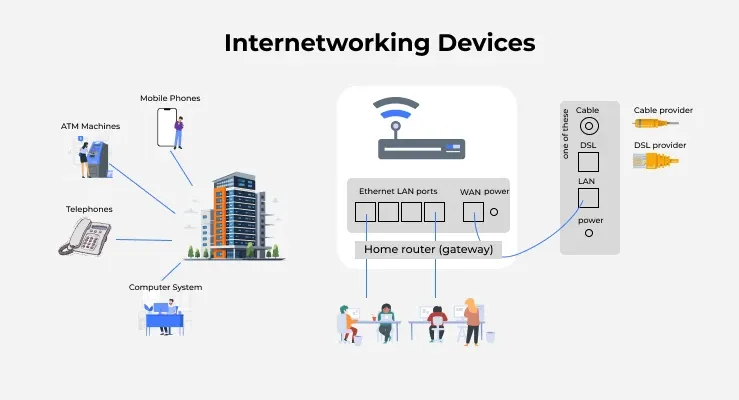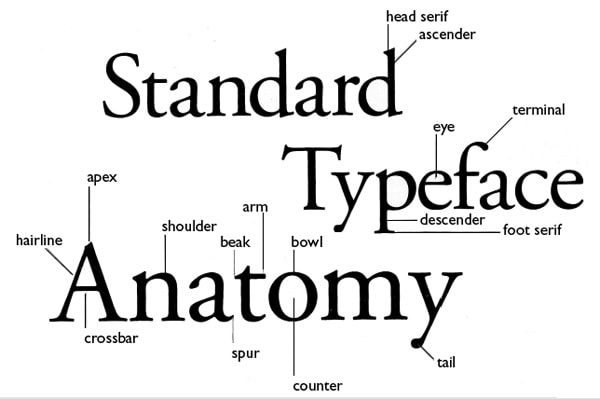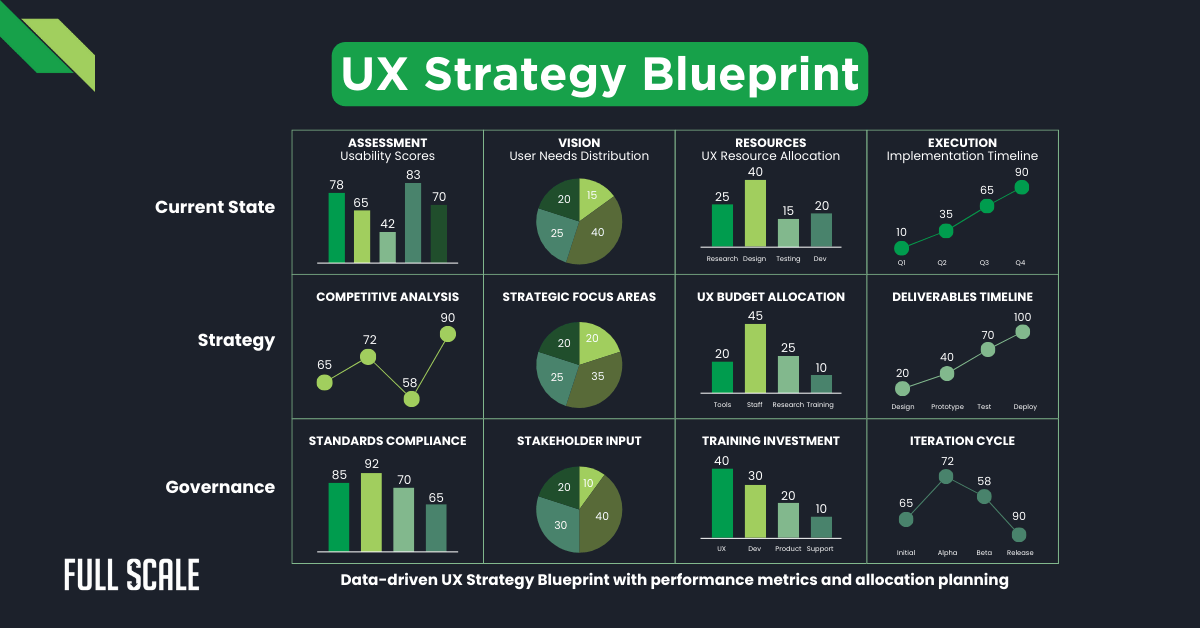Mastering Diagram Export: Ensuring Perfect Visuals Across Every Platform
Navigate the complexities of file format selection to deliver flawless diagrams on any device
In today's interconnected digital ecosystem, creating a brilliant diagram is only half the battle. Ensuring that your visual masterpiece appears exactly as intended—regardless of where and how it's viewed—requires strategic format selection and optimization. I'll guide you through the essential considerations for perfect multi-platform diagram sharing.
Understanding the Multi-Platform Diagram Sharing Challenge
When I create a diagram, I'm often faced with a fundamental challenge: the environment where I design isn't always the same as where my audience will view it. This disconnect between creation and consumption environments is the root of many diagram sharing problems.

File format selection isn't just a technical detail—it's critical for maintaining diagram integrity. I've learned that choosing the wrong format can lead to blurry images, distorted elements, or even complete rendering failures. When sharing diagrams across different devices and platforms, I often encounter these common pitfalls:
- Resolution degradation when scaling
- Font substitution or missing typography
- Color shifts between different displays
- Interactive elements becoming static
- Excessive file sizes slowing down sharing
I've found that types of diagrams significantly impact format selection decisions. For instance, a complex flowchart with many connections requires different format considerations than a simple bar chart. PageOn.ai's conversational approach has simplified my export decision process by analyzing my diagram's content and intended use, then recommending the optimal format automatically.
The Format Selection Challenge
The diagram below illustrates the key factors that influence format selection decisions:
flowchart TD
A[Diagram Created] --> B{Format Selection}
B -->|Web Use| C[Consider: SVG, PNG]
B -->|Print Use| D[Consider: PDF, TIFF, EPS]
B -->|Interactive Use| E[Consider: HTML5, JSON]
B -->|Cross-Platform| F[Consider: PDF, PNG]
C --> G{Web Factors}
G -->|Scaling Needed| G1[SVG Preferred]
G -->|Complex Graphics| G2[PNG Preferred]
G -->|Small File Size| G3[Optimized JPEG]
D --> H{Print Factors}
H -->|Commercial Print| H1[TIFF/EPS]
H -->|Office Print| H2[PDF]
E --> I{Interactive Needs}
I -->|User Manipulation| I1[HTML5/JS]
I -->|Data Preservation| I2[JSON/XML]
F --> J{Platform Concerns}
J -->|Mobile Compatibility| J1[Responsive SVG/HTML]
J -->|Software Constraints| J2[Universal Formats]
Essential File Formats for Diagram Distribution
Vector-Based Formats
In my experience, vector formats are indispensable when diagram clarity and scalability are paramount. These formats store images as mathematical formulas rather than pixel grids, allowing infinite scaling without quality loss.
| Format | Best Use Case | Advantages | Limitations |
|---|---|---|---|
| SVG | Web, interactive diagrams | Perfect scaling, small file size, can be animated | Complex SVGs can slow down browsers |
| Documentation, presentations | Universal compatibility, preserves fonts | Not ideal for web embedding | |
| EPS | Professional printing | Industry standard for print, high precision | Limited support in modern applications |
I've found that PageOn.ai's AI Blocks feature is particularly valuable for generating vector assets. It automatically creates diagram components that scale perfectly across different viewing contexts, eliminating the tedious manual work of optimizing each element.
Raster-Based Formats
When working with data visualization graph tools, I often need to consider raster formats for certain use cases. These pixel-based formats are ideal for photographs and complex gradient-rich diagrams.

| Format | Best Use Case | Advantages | Limitations |
|---|---|---|---|
| PNG | Web, screenshots, transparency | Lossless compression, transparency support | Larger file size than JPEG |
| JPEG | Photographs, complex gradients | Small file size, good color reproduction | Lossy compression, no transparency |
| TIFF | Print production, archiving | High quality, multiple compression options | Very large file sizes |
PageOn.ai's Deep Search functionality has transformed how I approach raster exports. It automatically recommends optimal resolution settings based on the diagram's content and intended use, saving me from the guesswork that often leads to unnecessarily large files or insufficient quality.
Interactive and Specialized Formats
Modern diagram sharing often requires more than static images. I've increasingly turned to interactive formats that allow viewers to explore and interact with my visualizations.
Format Popularity by Use Case
This chart shows the relative popularity of different formats across various use cases:
When working with real-time visual collaboration tools, I've found that PageOn.ai excels at transforming complex diagrams into interactive experiences. The platform intelligently preserves clickable elements, animations, and data-driven components when exporting to formats like HTML5.
Strategic Format Selection Framework
Over time, I've developed a systematic approach to format selection that ensures my diagrams always look their best, regardless of viewing context. This framework helps me match formats to specific audience needs and technical capabilities.
Format Selection Decision Tree
Follow this decision path to determine the optimal format for your specific use case:
flowchart TD
start[Format Selection] --> q1{Primary Use?}
q1 -->|Web/Digital| web[Digital Path]
q1 -->|Print| print[Print Path]
q1 -->|Both| both[Hybrid Approach]
web --> q2{Need Interactivity?}
q2 -->|Yes| q2a{What Type?}
q2 -->|No| q2b{Need Transparency?}
q2a -->|User Manipulation| html[HTML5/JS]
q2a -->|Simple Hover/Click| svg1[SVG]
q2b -->|Yes| q2c{File Size Concern?}
q2b -->|No| jpg[JPEG]
q2c -->|Yes| svgopt[Optimized SVG]
q2c -->|No| png[PNG]
print --> q3{Professional Print?}
q3 -->|Yes| q3a{Color Requirements?}
q3 -->|No| pdf1[PDF]
q3a -->|CMYK Needed| eps[EPS/TIFF]
q3a -->|RGB Acceptable| pdf2[PDF]
both --> q4{Prioritize?}
q4 -->|Quality| pdf3[PDF + SVG]
q4 -->|Convenience| pdf4[PDF Only]
style start fill:#FF8000,color:white
style html fill:#42A5F5,color:white
style svg1 fill:#42A5F5,color:white
style svgopt fill:#42A5F5,color:white
style png fill:#66BB6A,color:white
style jpg fill:#66BB6A,color:white
style pdf1 fill:#FF7043,color:white
style pdf2 fill:#FF7043,color:white
style pdf3 fill:#FF7043,color:white
style pdf4 fill:#FF7043,color:white
style eps fill:#AB47BC,color:white
When balancing file size constraints with visual quality requirements, I consider these key factors:
- Audience technical environment: Browser capabilities, device types, and software availability
- Distribution method: Email attachments have size limitations, while cloud sharing allows larger files
- Visual complexity: Simple diagrams can use lightweight formats, while complex visualizations may need higher fidelity
- Update frequency: Frequently updated diagrams benefit from formats that are easy to regenerate
I've found that comparison chart creation tools often have specific format requirements to maintain their interactive features. PageOn.ai has simplified my workflow by automatically suggesting optimal formats based on my diagram's content and intended use, taking into account factors like complexity, color depth, and interactive elements.

Optimization Techniques for Flawless Diagram Sharing
Even after selecting the right format, I've learned that additional optimization is often necessary to ensure diagrams appear flawlessly across different viewing contexts.
Resolution and DPI Considerations
Optimal Resolution by Viewing Context
This chart shows recommended resolutions for different viewing scenarios:
I've found that understanding color profile management is essential for consistent appearance across devices. For web-focused diagrams, I use sRGB color space, while print materials often require CMYK conversion. PageOn.ai's Vibe Creation feature has been invaluable in ensuring my diagrams maintain their intended impact across different color profiles and viewing environments.
Typography and Font Embedding Best Practices
Font handling is one of the trickiest aspects of cross-platform diagram sharing. I follow these practices to ensure consistent typography:
- For vector formats (SVG, PDF): Convert text to outlines/paths when using uncommon fonts
- For web sharing: Use web-safe fonts or include @font-face definitions
- For print materials: Embed fonts in PDF files or convert to outlines in EPS
- For maximum compatibility: Stick to widely available font families

When working with rapid serial visual presentation tools, I've found that font optimization becomes even more critical as text elements need to be quickly readable across multiple frames. PageOn.ai's intelligent structure recognition preserves typography choices while ensuring compatibility across platforms.
Advanced Multi-Platform Strategies
As my diagram sharing needs have grown more sophisticated, I've adopted advanced strategies to ensure optimal viewing experiences across diverse platforms and devices.
Creating Responsive Diagrams
I've learned that truly effective cross-platform diagrams need to adapt to different screen sizes and orientations. My approach to responsive diagram design includes:
Responsive Diagram Architecture
This diagram shows how responsive elements adapt across devices:
flowchart TD
subgraph "Responsive Diagram Architecture"
A[Master Diagram] --> B{Device Detection}
B -->|Desktop| C[Full Complexity View]
B -->|Tablet| D[Medium Complexity]
B -->|Mobile| E[Simplified View]
C --> C1[All Elements Visible]
C --> C2[Interactive Features]
C --> C3[High Resolution]
D --> D1[Condensed Layout]
D --> D2[Core Interactive Features]
D --> D3[Optimized Resolution]
E --> E1[Essential Elements Only]
E --> E2[Touch-Optimized Controls]
E --> E3[Performance Optimized]
end
style A fill:#FF8000,color:white
style B fill:#FF8000,color:white
style C fill:#42A5F5,color:white
style D fill:#66BB6A,color:white
style E fill:#FF7043,color:white
For complex diagrams, I've found that implementing progressive loading significantly improves the viewing experience, especially on mobile devices with limited bandwidth. This approach involves:
- Loading diagram skeleton/structure first
- Adding detail elements progressively
- Deferring high-resolution assets until needed
- Using vector formats that scale efficiently
Accessibility Considerations
Making diagrams accessible to all users is both an ethical responsibility and often a legal requirement. I ensure my diagrams are accessible by:
For Visual Impairments
- Adding detailed alt text
- Ensuring sufficient color contrast
- Providing text alternatives
- Supporting screen readers
For Cognitive Accessibility
- Using clear, consistent layouts
- Providing simplified versions
- Adding descriptive captions
- Using intuitive color coding
PageOn.ai's intelligent structure recognition has been a game-changer for my workflow. The platform preserves diagram hierarchy across formats, ensuring that the logical structure and relationships between elements remain intact regardless of the export format chosen.

Collaborative Diagram Sharing Workflows
In collaborative environments, effective diagram sharing goes beyond technical format considerations to encompass workflow and process optimizations.
Version Control Best Practices
For diagrams that evolve over time, I've found these version control practices to be essential:
Diagram Version Control Workflow
A standardized approach to managing diagram versions in collaborative environments:
flowchart TD
A[Create Master Diagram] --> B[Store in Version Control System]
B --> C{Collaborative Review}
C -->|Approved| D[Create Release Version]
C -->|Changes Needed| E[Branch for Revisions]
D --> F[Generate Export Package]
F --> G[Distribution]
E --> H[Implement Feedback]
H --> I[Merge Changes]
I --> C
G --> J{Update Needed?}
J -->|Yes| K[Identify Change Scope]
J -->|No| L[Archive Version]
K -->|Major Change| A
K -->|Minor Change| E
style A fill:#FF8000,color:white
style D fill:#66BB6A,color:white
style F fill:#42A5F5,color:white
style L fill:#AB47BC,color:white
Creating diagram packages with multiple format options has helped me address diverse stakeholder needs in a single distribution. A typical export package I create includes:
For Presentations
- High-resolution PNG
- PDF with embedded fonts
- PowerPoint-compatible version
For Development Teams
- SVG for implementation
- JSON data structure
- Interactive HTML prototype
For Documentation
- Print-optimized PDF
- Web-optimized SVG
- Accessible text description
Permissions and Security Considerations
For sensitive diagrams, I implement these security measures:
- Watermarking: Adding visible or invisible watermarks to track distribution
- Password protection: Securing PDF files with access controls
- Metadata scrubbing: Removing sensitive information from file properties
- Expiring links: Using time-limited access for cloud-hosted diagrams
PageOn.ai's real-time visual collaboration tools have streamlined my feedback and iteration process. The platform allows stakeholders to comment directly on diagram elements, track changes over time, and collaborate on improvements without the confusion of managing multiple file versions.
Case Studies: Format Selection Success Stories
Real-world examples have taught me valuable lessons about diagram format optimization. Here are some notable success stories I've encountered:
Enterprise Standardization
A global enterprise with 15,000 employees faced significant challenges with inconsistent diagram formats leading to communication breakdowns and rework. Their solution included:
- Creating a centralized diagram repository with version control
- Standardizing on SVG for digital use and PDF for print materials
- Implementing automated export processes for consistent quality
- Developing clear guidelines for diagram creation and sharing
The results were impressive: 73% reduction in diagram-related support tickets, 45% faster diagram creation time, and significantly improved cross-department communication.
Technical Documentation Team
Documentation Team Efficiency Gains
After implementing strategic format selection processes:
Educational Institution's Accessible Diagram Solution
A major university needed to make complex scientific diagrams accessible to students with various disabilities. Their approach included:
- Creating layered SVG diagrams with semantic structure
- Providing text alternatives for all visual elements
- Developing interactive HTML versions with keyboard navigation
- Offering multiple contrast modes and zoom capabilities
PageOn.ai played a crucial role in transforming complex system architecture diagrams for diverse stakeholders. The platform's ability to maintain consistent visual language while adapting to different technical requirements helped bridge communication gaps between business and technical teams.

Future-Proofing Your Diagram Export Strategy
As technology evolves, so too must our approach to diagram sharing. I'm constantly monitoring these emerging trends to stay ahead of the curve.
Emerging Format Standards
Format Adoption Timeline Forecast
Projected adoption rates for emerging diagram formats:
AI-powered format conversion and optimization is transforming how we approach diagram sharing. These technologies enable:
- Automatic format selection based on content and context
- Intelligent resolution and quality optimization
- Content-aware compression that preserves critical details
- Adaptive rendering based on viewing device capabilities
To anticipate cross-platform compatibility challenges, I recommend:
Short-Term Strategy
- Focus on widely supported standards
- Provide multiple format options
- Test across common platforms
- Implement responsive design principles
Long-Term Strategy
- Invest in component-based diagram creation
- Build format-agnostic content repositories
- Adopt AI-powered format optimization
- Explore emerging interactive standards
PageOn.ai continuously evolves to support new diagram sharing paradigms. The platform's AI-driven approach anticipates viewing contexts and automatically applies the appropriate optimizations, ensuring that diagrams remain effective communication tools regardless of how technology evolves.
Transform Your Visual Expressions with PageOn.ai
Stop worrying about file formats and platform compatibility. Let PageOn.ai's intelligent visualization tools handle the technical details while you focus on communicating your ideas clearly and effectively.
Start Creating with PageOn.ai TodayEmbracing Format Flexibility for Effective Communication
Throughout my journey with diagram creation and sharing, I've learned that there's no one-size-fits-all solution to format selection. The key is developing a flexible, context-aware approach that prioritizes the audience's needs and technical environment.
By understanding the strengths and limitations of different file formats, implementing strategic optimization techniques, and leveraging advanced tools like PageOn.ai, I've been able to ensure that my visual communications maintain their impact regardless of how they're viewed.
As visualization technologies continue to evolve, the principles we've explored—audience-centered format selection, quality optimization, and platform-appropriate delivery—will remain essential for effective diagram sharing. With PageOn.ai's intelligent approach to diagram creation and export, I'm confident in my ability to communicate complex ideas visually across any platform, now and in the future.
You Might Also Like
Mastering Visual Flow: How Morph Transitions Transform Presentations | PageOn.ai
Discover how Morph transitions create dynamic, seamless visual connections between slides, enhancing audience engagement and transforming ordinary presentations into memorable experiences.
Enhancing Audience Experience with Strategic Audio Integration | Create Immersive Brand Connections
Discover how strategic audio integration creates immersive brand connections across podcasts, streaming platforms, and smart speakers. Learn frameworks and techniques to transform your marketing.
The Strategic GIF Guide: Creating Memorable Moments in Professional Presentations
Discover how to effectively use GIFs in professional presentations to create visual impact, enhance audience engagement, and communicate complex concepts more memorably.
The AI-Powered Pitch Deck Revolution: A Three-Step Framework for Success
Discover the three-step process for creating compelling AI-powered pitch decks that captivate investors. Learn how to clarify your vision, structure your pitch, and refine for maximum impact.